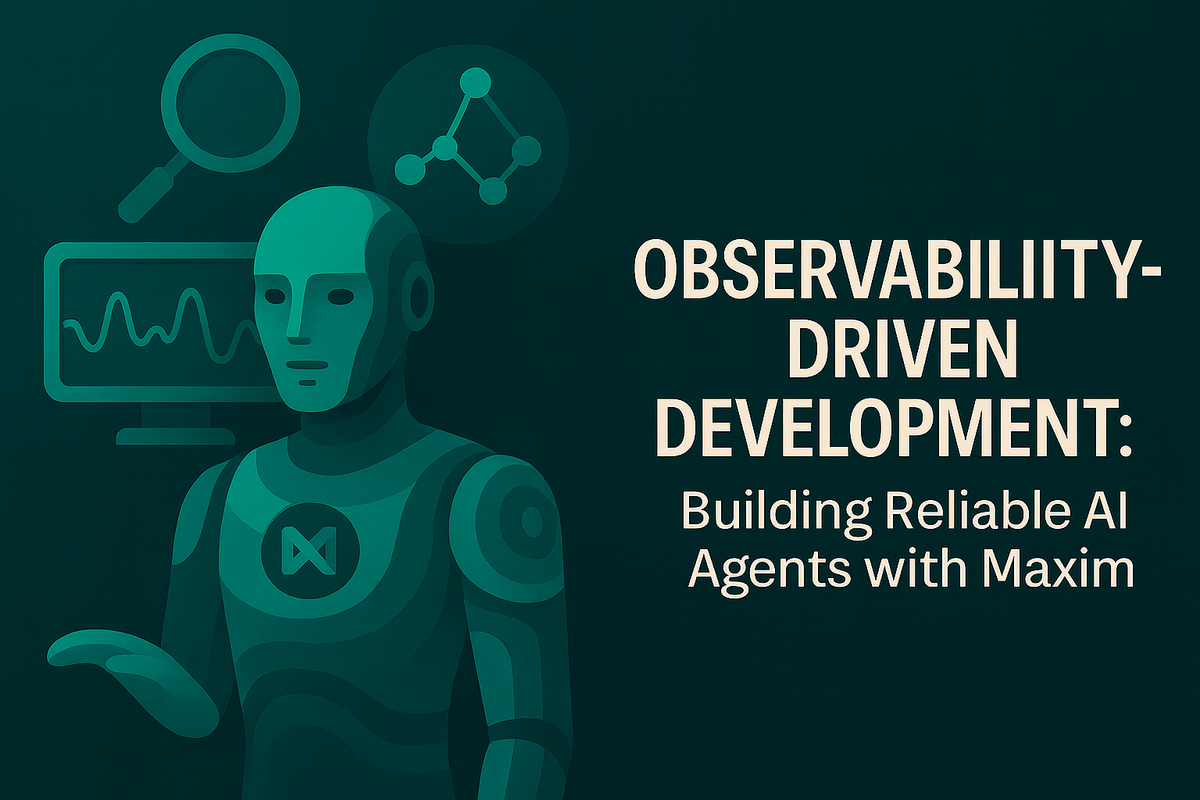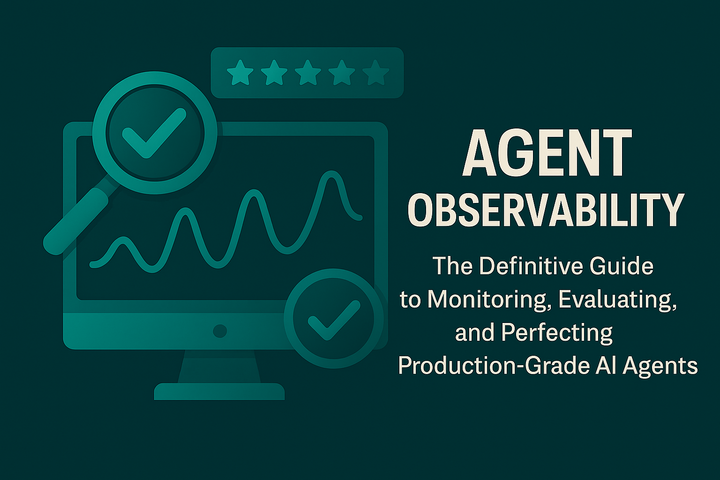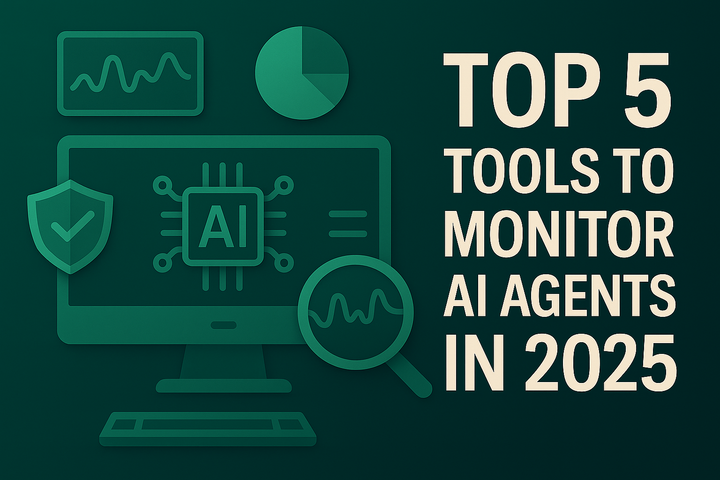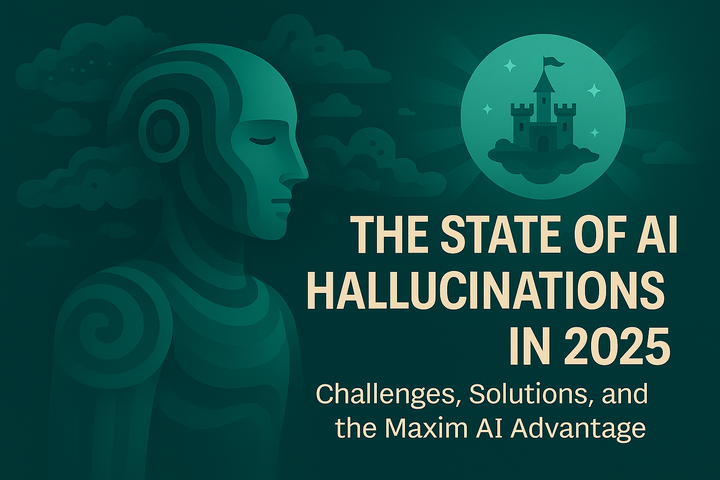Observability-Driven Development: Building Reliable AI Agents with Maxim

Large Language Models (LLMs) have rapidly evolved from research novelties to foundational elements in enterprise AI applications. As organizations deploy LLM-powered agents in critical workflows, the focus has decisively shifted from mere prototyping to ensuring reliability, transparency, and continuous improvement in production environments. Observability-driven development is now essential for building trustworthy, scalable, and high-performing AI systems.
The Shifting Landscape: From Prototyping to Production
LLMs are fundamentally different from traditional deterministic software. Their outputs are probabilistic, influenced by prompts, context, model parameters, and external data. This non-determinism introduces new complexities:
- Unpredictable Outputs: The same input can yield different results across sessions.
- Difficult Debugging: Failures and anomalies are harder to trace without granular instrumentation.
- Opaque Reasoning: Model decisions are often not interpretable by default.
- Quality Drift: Model behavior can evolve due to data changes or prompt modifications.
Traditional monitoring tools, designed for rule-based systems, are insufficient for these challenges. They cannot correlate prompts with completions, trace multi-step reasoning, or capture subjective feedback. As a result, organizations risk unexplained failures, rising operational costs, and diminished user trust.
For a deep dive into these challenges and their solutions, see LLM Observability: How to Monitor Large Language Models in Production.
What Is Observability-Driven Development?
Observability-driven development is the practice of instrumenting AI systems from the outset, enabling teams to:
- Trace End-to-End Workflows: Visualize every step, from user input to model output, across distributed services.
- Monitor Key Metrics: Track latency, cost, token usage, error rates, and subjective quality signals in real time.
- Debug and Diagnose: Quickly pinpoint root causes of anomalies, failures, or degraded performance.
- Continuously Improve: Use live production data to refine prompts, retrain models, and enhance user experience.
This approach is not an afterthought, it is foundational to building robust AI products. For practical guidance, refer to Evaluation Workflows for AI Agents.
Core Principles of LLM Observability
1. Distributed Tracing
Distributed tracing is the backbone of modern AI observability. It enables teams to track the complete lifecycle of a request, spanning multiple microservices, LLM calls, retrievals, and tool integrations.
Key Entities in Maxim’s Observability Framework:
- Session: Multi-turn conversations or workflows, persistent until closed (Sessions - Docs).
- Trace: End-to-end processing of a single request, containing multiple spans and events (Traces - Docs).
- Span: Logical units within a trace, representing workflow steps or microservice operations (Spans - Docs).
- Generation: Individual LLM calls within a trace or span (Generations - Docs).
- Retrieval: External knowledge base or vector database queries, essential for RAG applications (Retrieval - Docs).
- Tool Call: API or business logic calls triggered by the LLM (Tool Calls - Docs).
- Event: State changes or user actions during execution (Events - Docs).
- User Feedback: Structured ratings and comments for continuous improvement (User Feedback - Docs).
- Attachments: Files or URLs linked to traces/spans for richer debugging context (Attachments - Docs).
- Metadata and Tags: Custom key-value pairs for advanced filtering and grouping (Metadata - Docs, Tags - Docs).
- Error Tracking: Capturing errors for robust incident response (Errors - Docs).
2. Open Standards and Interoperability
Maxim builds on OpenTelemetry semantic conventions, ensuring seamless integration with enterprise observability stacks such as New Relic and Snowflake. This open approach allows organizations to:
- Ingest traces using standard protocols.
- Forward enriched data for centralized analytics.
- Avoid vendor lock-in and ensure future-proof observability.
See Forwarding via Data Connectors - Docs and Ingesting via OTLP Endpoint - Docs for technical details.
3. Real-Time Monitoring and Alerting
Production-grade observability requires instant visibility and proactive response. Maxim provides:
- Customizable Alerts: Set thresholds on latency, cost, error rates, and quality scores.
- Integration with Incident Platforms: Notify the right teams via Slack, PagerDuty, etc.
- Real-Time Dashboards: Visualize key metrics and trends at session, trace, and span levels.
Explore Agent Observability for a full feature overview.
4. Evaluation and Feedback Loops
Robust evaluation is critical for continuous improvement:
- Automated Metrics: Track accuracy, safety, compliance, and performance.
- Human-in-the-Loop Review: Collect internal or external annotations for nuanced quality assessment.
- Flexible Sampling: Evaluate logs based on custom filters and metadata.
- Quality Monitoring: Measure real-world interactions at granular levels.
For frameworks and metrics, see AI Agent Quality Evaluation and AI Agent Evaluation Metrics.
Setting Up Observability with Maxim: A Technical Walkthrough
1. Organize Log Repositories
Segment logs by application, environment, or team for targeted analysis.
2. Instrument Your Application
Install the Maxim SDK for your preferred language (JS/TS, Python, Go, Java) and initialize logging. See Tracing Quickstart - Docs.
import { Maxim } from "@maximai/maxim-js"
const maxim = new Maxim({ apiKey: "" });
const logger = await maxim.logger({ id: "" });
3. Trace Requests and Workflows
Create traces for each user request, logging inputs, outputs, and metadata.
const trace = logger.trace({ id: "trace-id", name: "user-query" });
trace.input("Hello, how are you?");
trace.output("I'm fine, thank you!");
trace.end();
4. Add Spans, Generations, and Retrievals
Break workflows into spans, log LLM generations, and capture retrieval operations.
const span = trace.span({ id: "span-id", name: "classify-question" });
const generation = span.generation({
id: "generation-id",
name: "gather-information",
provider: "openai",
model: "gpt-4o",
modelParameters: { temperature: 0.7 },
messages: [
{ role: "system", content: "You are a helpful assistant." },
{ role: "user", content: "My internet is not working." },
],
});
const retrieval = span.retrieval({
id: "retrieval-id",
name: "knowledge-query",
});
5. Monitor Errors and Collect Feedback
Log errors and gather user feedback for ongoing improvement.
generation.error({
message: "Rate limit exceeded.",
type: "RateLimitError",
code: "429",
});
trace.feedback({
score: 5,
feedback: "Great job!",
metadata: { flow: "support", properties: { name: "John Doe" } }
});
6. Visualize, Analyze, and Alert
Access dashboards to monitor traces, analyze metrics, and set up alerts. See Tracing Overview - Docs.
Advanced Features: Maxim’s Differentiators
Seamless Integrations
Maxim supports all leading agent orchestration frameworks, including OpenAI, LangGraph, and Crew AI. Its stateless SDKs and OTel compatibility ensure smooth integration with existing systems and observability platforms.
Scalability and Enterprise Readiness
Maxim is designed for large-scale, mission-critical deployments:
- In-VPC Deployment: Secure deployment within your private cloud.
- Custom SSO: Personalized single sign-on integration.
- SOC 2 Type 2 Compliance: Advanced data security.
- Role-Based Access Controls: Fine-grained user permissions.
- Multi-Player Collaboration: Real-time team workflows.
- 24/7 Priority Support: Immediate assistance at any time.
For details, visit Enterprise Features - Docs.
Data Export and Hybrid Architectures
Export observability and evaluation data via CSV or APIs, and forward traces to New Relic, Snowflake, or any OTel-compatible platform for centralized analytics and compliance.
Case Studies: Observability in Action
Clinc: Elevating Conversational Banking
Clinc leveraged Maxim’s distributed tracing and evaluation workflows to achieve AI confidence in conversational banking, improving reliability and customer experience. Read the case study
Thoughtful: Building Smarter AI Workflows
Thoughtful used Maxim’s observability suite to debug complex agent workflows, optimize prompt engineering, and measure quality across production endpoints. Read the case study
For more real-world examples, explore Maxim’s case studies.
Best Practices for LLM Observability
- Instrument Early: Integrate observability from the start of development.
- Standardize Logging: Use consistent message formats across providers.
- Leverage Metadata: Annotate traces for powerful filtering and analytics.
- Monitor Subjective Metrics: Combine user feedback with objective metrics.
- Automate Quality Checks: Regularly evaluate outputs for reliability.
- Continuously Curate Datasets: Use production logs to refine training and evaluation sets.
For a comprehensive guide, see How to Ensure Reliability of AI Applications: Strategies, Metrics, and the Maxim Advantage.
Comparing Maxim to Other Observability Platforms
Maxim stands out for its comprehensive tracing, native support for GenAI workflows, and seamless enterprise integration. For detailed comparisons:
Conclusion
Observability-driven development is not optional for LLM-based systems, it is a necessity. By adopting distributed tracing, integrating real-time feedback, and leveraging Maxim’s industry-leading platform, teams can move beyond black-box AI and deliver consistent, measurable value in production.
To learn more, visit Maxim AI, explore the Maxim documentation, and review our blog for the latest insights and case studies.
Ready to see Maxim in action? Book a demo today.
Further Reading:
- Prompt Management in 2025: How to Organize, Test, and Optimize Your AI Prompts
- Agent Evaluation vs. Model Evaluation: What’s the Difference and Why It Matters
- AI Model Monitoring: The Key to Reliable and Responsible AI in 2025
- Agent Tracing for Debugging Multi-Agent AI Systems
- AI Reliability: How to Build Trustworthy AI Systems


